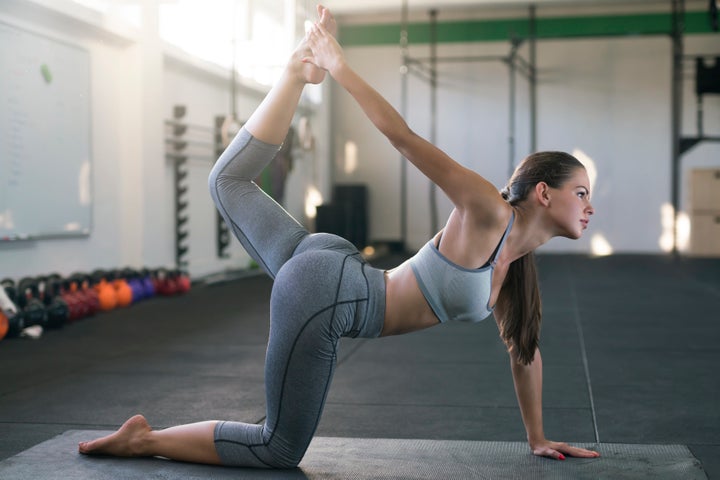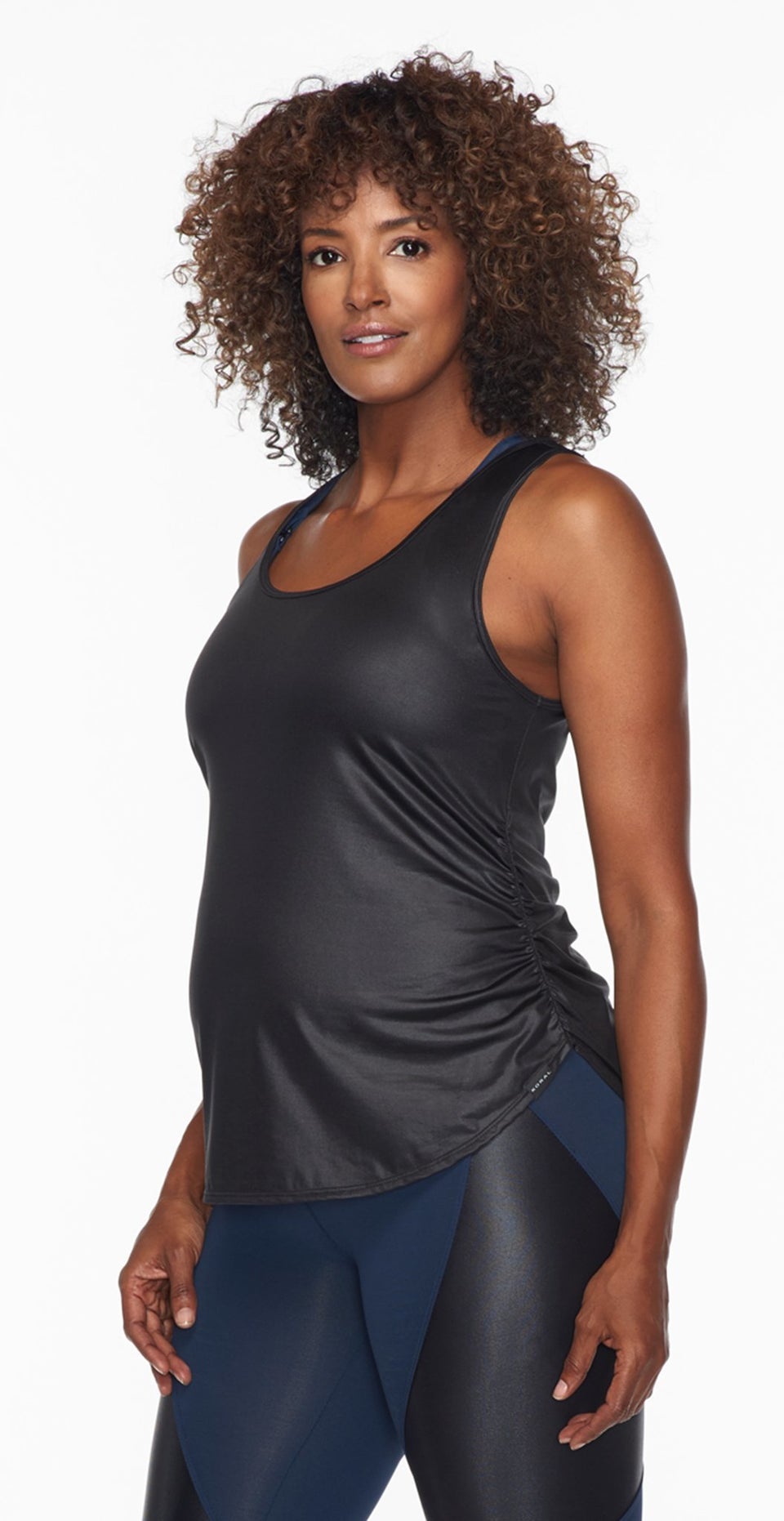
We’re just going to come right out and ask: Should we be wearing underwear under our tights or leggings when working out?
Some argue in favor of undies and others tout the benefits of going commando. Much of the debate focuses on whether skipping undergarments is unsanitary or perhaps leads to an increased risk of bacterial vaginosis or yeast infections.
“Those are the two main things patients are concerned about with exercise,” Dr. Scott Osmun, a board-certified OB-GYN physician at BloomOB-GYN in Washington, D.C., told HuffPost. “Bacteria and yeast tend to grow in warm, moist places. I hate to use that word because I don’t like it, but it’s true.”
He added, “Any extra moisture in the vaginal area can definitely promote yeast infections, bacterial vaginosis.”
But if you’re in the no-underwear camp, fear not. According to Osmun, “it’s absolutely safe to not wear underwear when you exercise.”
Dr. Mary Rosser, a board-certified OB-GYN with Columbia Doctors in New York, added that it’s all about personal preference.
“I really tell people, ‘Do what you feel is right for you,’” Rosser said. “Some people just have to wear underwear. They just can’t think of doing it without.”
If you’re going commando, there are some things you should keep in mind when selecting workout clothing.
“I think one of the most important things when someone exercises is to choose material that is better for wicking away moisture,” Osmun said.
Cotton and spandex/Lycra are two of the most common options for workout gear, but as Osmun told HuffPost, clothing made from bamboo pulp is also effective for keeping moisture at bay. He also noted that some brands, like Lululemon and Patagonia, use fabric with silver woven into it. Silver is an antibacterial agent, which Osmun said is helpful for reducing bacteria buildup in clothes and potentially reducing the risk for infection.
Additionally, you want to make sure that “what you’re wearing is thick enough so you don’t get any bacteria that’s on a seat at the gym,” as Dr. Raquel Dardik, an OB-GYN at NYU Langone Medical Center, told Greatist in 2015. Rosser noted that thin leggings aren’t always great at providing ample coverage, if you know what we mean.
For those who prefer the added underlayer, the same general principles apply. Osmun recommended choosing underwear made from a breathable fabric that also has a cotton gusset (aka a cotton panel in the crotch) to wick moisture away from the body during physical activity.
“I would avoid some of the synthetic products like polyester. It might be good as a coverup overtop if you’re out in the colder weather or rain, but you definitely don’t want to wear polyester as a fabric when you’re exercising,” Osmun said. You should also avoid lace or satin during a workout, as they aren’t breathable and might even cause irritation.
After a workout, you should change out of your damp, sweaty clothes and shower as soon as possible, whether or not you’re wearing underwear.
“You just want to get out of those wet clothes because if you’re sitting around with moist clothing on around the vaginal area, that can increase your risk of yeast infections,” Rosser said, adding that excess moisture can also lead to uncomfortable chafing.
Also, please do yourself (and other people at the gym) a favor and wash your clothes ― especially your leggings and especially if you work out sans underwear ― in between workouts.
The one thing you might want to avoid during a workout is wearing a thong. Osmun advised against it.
“The material causes more friction and irritation, and any friction or irritation can make little cuts or microabrasions in your skin, and those cuts can lead to bacterial infections, which can cause discomfort, itching, redness, pain,” Osmun said. “I think thongs are definitely something to avoid when you’re exercising. It’s actually probably safer to go commando than to wear thongs.”
If that isn’t enough to deter you, maybe this will: “If you have a little bacteria — E. coli is the most common bacteria in the colon — in the back part of the fabric and you’re physically active, that material may move,” Dr. Jill M. Rabin told HuffPost previously. “All it has to do is move an inch or two and it’s next to the vagina or urethra. That thong may be depositing colonic bacteria into your vagina or urethra.”
Rosser advised that if you absolutely must wear a thong for your workout, opt for one with a cotton crotch to help absorb moisture.
“If you are wearing them successfully and don’t [have any issues], then you can continue to do it,” Rosser said. “But there are some people more prone to infections, whether they be urinary or vaginal, that probably don’t want to wear thongs.”
At the end of the day, both Osmun and Rosser agreed there isn’t a real downside to either going commando or wearing underwear.
Just make sure you choose breathable, moisture-wicking fabrics; wash your clothes well in between wearings; and maybe leave the thongs in your underwear drawer.
